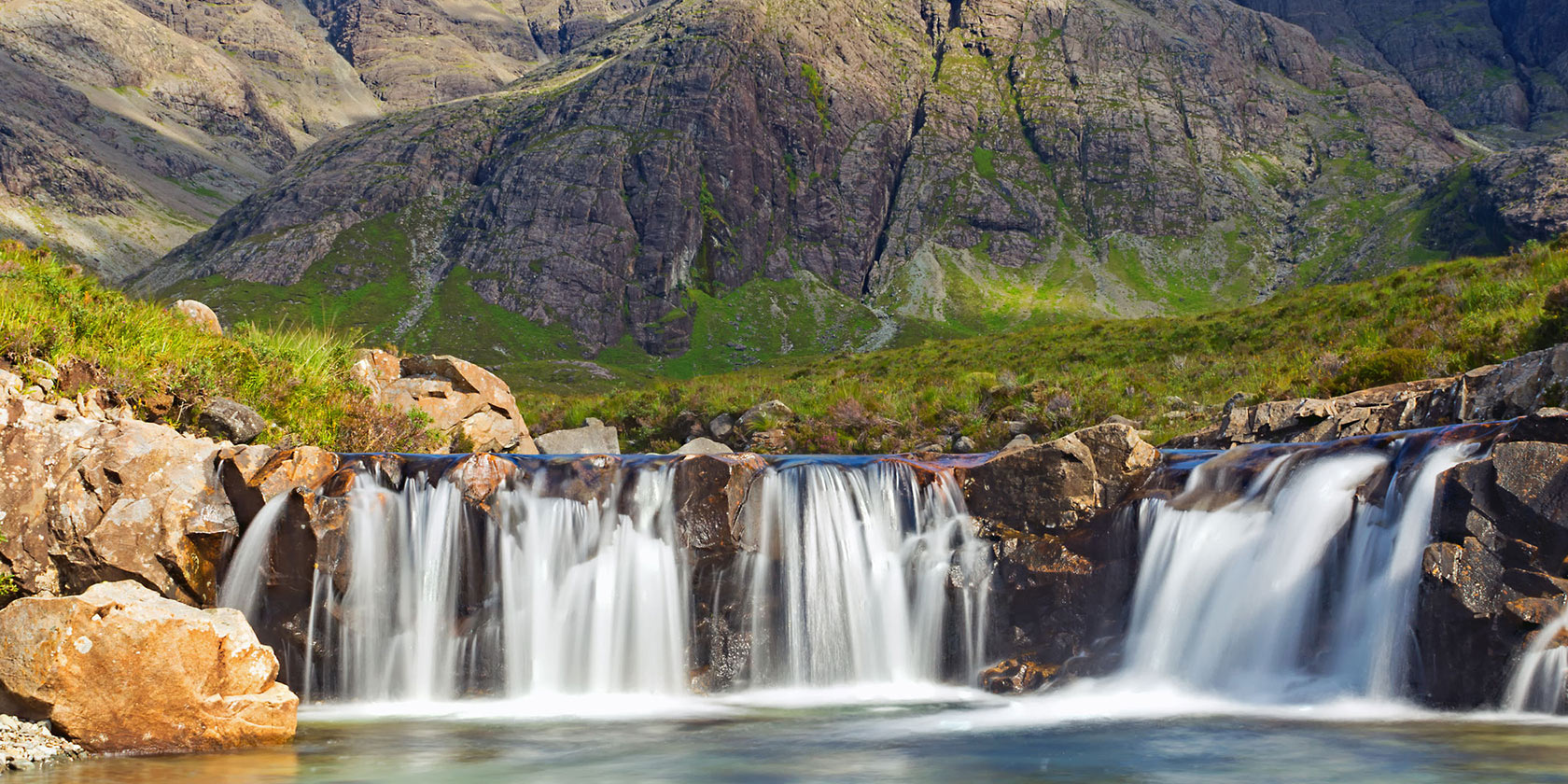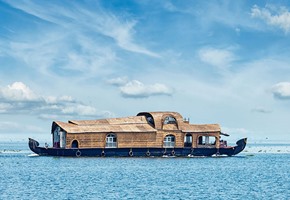To celebrate wonderful St Andrew's Day this week, we thought we'd delve into the heritage of a country that has an abundance of the stuff. Most visitors are aware of the delights of whisky, kilts and haggis, but there's plenty more to Scotland than clichés (even if they are pretty good ones). So we've done the hard work for you and found five of the most obscure attractions that can be experienced on your next visit north of the border.
1 - Fairy Pools. The Isle of Skye has many draws with its wild landscapes, ancient castles and quaint fishing villages, but take a gentle hike into the surrounding hills and peaks and you'll be transported into a magical realm of sapphire blue waters that look as if they would be better suited to the Caribbean rather than Caledonia. These little pockets of charming nature are known as fairy pools thanks to their storybook settings, which allow you to easily imagine stumbling upon a secret meeting of magical creatures. Some stand alone amongst the bracken and gorse, whereas others are connected by a serious of glacial waterfalls. And while they may look incredibly tempting to bathe in, and many people do, the water is far from lovely - rarely reaching temperatures higher than 6 degrees Celsius.
2 - Garden of Cosmic Speculation, Dumfries. Maybe it's because too many people questioning their place within the cosmos would cause widespread existential panic that this unique garden is only open to the public for one day out of the year, but if you do manage to become one of the very exclusive visitors to this permanent horticultural installation, you'll be a member of an extremely elite club indeed. Created in the 1980s by the US landscape architect Charles Jencks, time here allows you to explore thirty acres of physics inspired park land from double helix inspired topiary, to undulating waves of rhododendrons as you mull over some of the universes biggest conundrums like black holes and the Big Bang. Set in Jencks's private estate, it makes for the perfect combination of science and nature.
3 - Electric Brae, Ayrshire. Keeping with the theme of mysterious physical phenomena, we find ourselves on what appears to be a standard British 'A' road in Ayrshire, nestled between the towns of Drumshrang and Knoweside. Here, despite the laws of gravity, cars left to their own devices will begin to roll uphill…except that they don't really - it's all an optical illusion, albeit a rather impressive one. It used to be believed that some undiscovered magnetic force was interfering with the car's metal components, when in actuality (to put it as simply as possible) the geometry of the immediate countryside just makes it look as if vehicles are travelling upwards instead of down.
4 - Kagyu Samye Ling, Dumfries and Galloway. Scotland may not be the first place that comes to mind when you think of Buddhism, the philosophical religion that originated in Asia, so it may surprise you to hear that it's played host to the largest Buddhist temple in the western world since 1967. Kagyu Samye Ling is a peaceful retreat in the heart of the Eskadalemuir Valley that is home to up to 60 monks and has boasted famous visitors such as John Lennon and Yoko Ono, David Bowie and Leonard Cohen, who have all spent time here searching for inner calm and tranquillity. And you can too, with the site open to day visitors as well as holding longer retreats that specialise in meditation and introductions to Buddhist principles.
5 - Staffin Bay. Finishing where we started, the Isle of Skye doesn't accommodate just mythical beings, but also the ghosts of prehistoric ones as well. Staffin Bay on the north of the island wears its history on its sleeve and allows you to literally walk in the footsteps of dinosaurs that roamed the land here 165 million years ago, an almost staggering amount of time to try and comprehend. What you can see when looking down in to the awesome three-pronged imprints are the moment a pack of Ornithopods (two-legged herbivores that could reach 15 metres in length) walked through what was once a think mud slick, that over time fossilised after being filled in with sand which then hardened over millennia. To learn more about the different dinosaurs that used to live here, you can also make a visit to the diminutive Staffin Museum which boasts exhibits including the world's smallest dinosaur footprint and assorted dinosaur bones.






